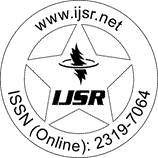Downloads: 185 | Views: 435 | Weekly Hits: ⮙1 | Monthly Hits: ⮙1
Research Paper | Food Science | India | Volume 8 Issue 10, October 2019 | Popularity: 6.4 / 10
Medicinal Properties of Papaya (Carica papaya Linn.) and its Sensory Evaluation
Ashok Kumar, Sunita Mishra
Abstract: Papaya (Carica papaya L. ) is a Popular and important Fruit tree in Tropical and Subtropical parts of the World. The Fruit is consumed Worldwide as fresh Fruit and Vegetable or used as processed product. The Fruit is Healthy and delicious and the whole plant parts including Fruit, Root, Bark, Peel, Seeds and Pulp are also known to have Medicinal properties. The many benefits of Papaya are owed due to high content of Vitamin A, B and C, Proteolytic Enzymes like Papain and Chymopapain which have Antiviral, Antifungal and Antibacterial properties. During the last few Years, major insight has been achieved regarding the Biological activity and Medicinal application of Papaya and now it is considered a valuable Neutraceutical Fruit plant. In the present review, nutritional value of the fruit and Medicinal properties of its various parts have been discussed to provide collective information on this multipurpose commercial fruit crop.
Keywords: Papaya Carica papaya Linn, Antiviral, Biological activity, Neutraceutical Fruit plant, Nutritional value
Edition: Volume 8 Issue 10, October 2019
Pages: 168 - 170
Make Sure to Disable the Pop-Up Blocker of Web Browser
